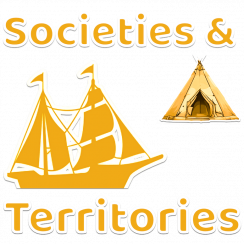Kwé! [Hi!]
Anjij Teluwisi [My name is Annie]. I’d like to introduce you to Gaspé’s Mi’kmaq population.
First of all, there were about 15 000 Mi’kmaq living in 20 villages in the Maritimes. Like the Mi’kmaq from Quebec, many speak Miꞌkmawiꞌsimk, or Mi’kmaw language which is part of the Algonquin language family. There were 2 300 Mi’kmaq in Quebec and the majority lived in the villages of Gaspe, Maria and Restigouche. About one third of Mi’kmaq originally from Maria and Restigouche lived in other areas of Quebec because they were working or studying.
Restigouche was the largest Mi’kmaq community in Quebec with 1,179 residents. At the end of the 17th century, the village was just a small mission founded by religious missionaries in order to convert the Mi’kmaq to Christianity.
There were many young people among us: 50% of Mi’kmaq was under 25 years old. Our population was growing rapidly, and we were running out of space in Maria and Restigouche because young families were settling there.
Intermarriage
We lived surrounded by Francophone and Anglophone Quebeckers, but originally we were the only ones who lived on the east coast of the Gaspé Peninsula. Gradually, other people came to settle in the region. Some Mi’kmaq married non-Indigenous people; this is known as intermarriage.
According to the Indian Act, an Indigenous woman who married a non-Indigenous man could no longer live on the reserve. They lost their status. In 1985, the Canadian government changed this discriminatory law. Ever since then, many Mi’kmaq women have regained their rights and have come back to live on the reserves.
Author: Service national du Récit de l’univers social


